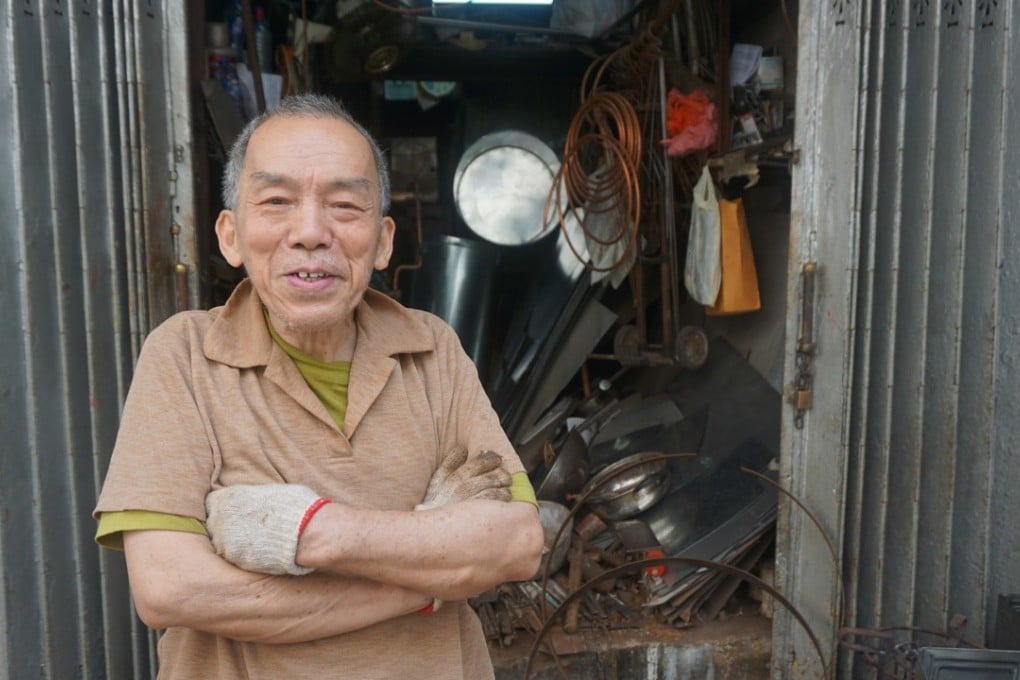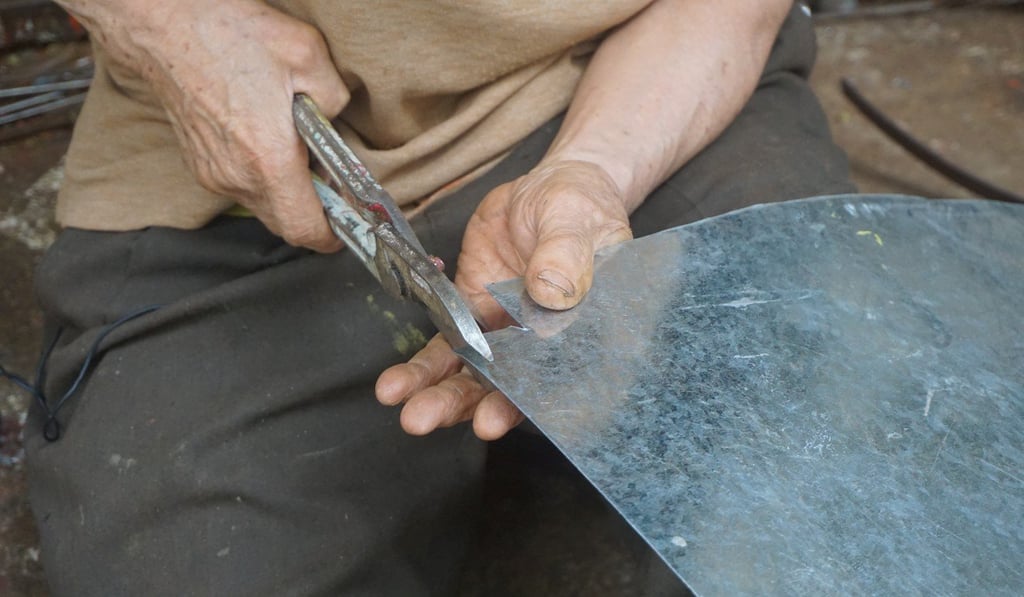The Hong Kong artisans who can bash sheet metal into anything, and how they survive in the machine age
Buckets, letterboxes, pots and pans, a food stall – there’s nothing these men can’t fashion out of galvanised iron using a hammer, cutters, a bending machine and their bare hands. It’s a dying art some are trying to pass on

The workshop has barely changed since Ho’s father opened it before the second world war. Surrounded by antique shops and trendy bars, Ho toils away at the front of his shop, seated on a small stool. Ho is a “white metal man” (baak tit lou in Cantonese), an artisan who makes goods out of galvanised iron.

With a strong pair of cutters, an ageing bending machine and a hammer, Ho hand crafts every product that emerges from his workshop. These range from donation boxes for temples and spare parts for air conditioners to cooking pots for restaurants.
In the 1940s, galvanised iron began to play an increasingly important role in Hong Kong households. It was durable – the iron is coated with a layer of zinc to prevent it from rusting or corroding – and also extremely light and inexpensive, making it ubiquitous in the city. It has been used for making everything from small household appliances such as buckets, watering cans and letterboxes, to larger structures including corrugated iron sheds and open-air food stalls.

As the use of plastic grew in the 1950s and ’60s, however, galvanised iron lost its competitive edge. Automation and mass production led to a further decline in the industry in the ’80s, and today only a handful of metal craftsmen continue to ply their trade in Hong Kong.
I love my job. It is not just about making a product. There is creativity involved. I am helping my customers to solve their problems
Ho is even more of a rarity because neither his shop nor his methods have changed much since the day he first picked up his tools.